
Let’s talk about the controversial issue of venting an unconditioned attic with outdoor air. It’s easy to confuse causes and symptoms sometimes, and that happens a lot with attic ventilation. I’ll say upfront, though, that the International Residential Code requires unconditioned attics to be vented. But let’s look at the building science side of the question here.
Powered attic ventilators
To begin, powered attic ventilators are almost never a good idea. Yes, they can keep the attic cooler in summer than a passively-vented or unvented attic. One problem, though, is they sometimes do that by stealing conditioned air from the living space. These fans, mounted in the roof deck or a gable end, typically move 1,000 to 2,000 cubic feet of air per minute. That amount of airflow can easily pull air from the living space through an unsealed attic floor. In some cases, they can present a safety hazard by backdrafting a natural draft gas water heater and putting carbon monoxide into the home’s air.
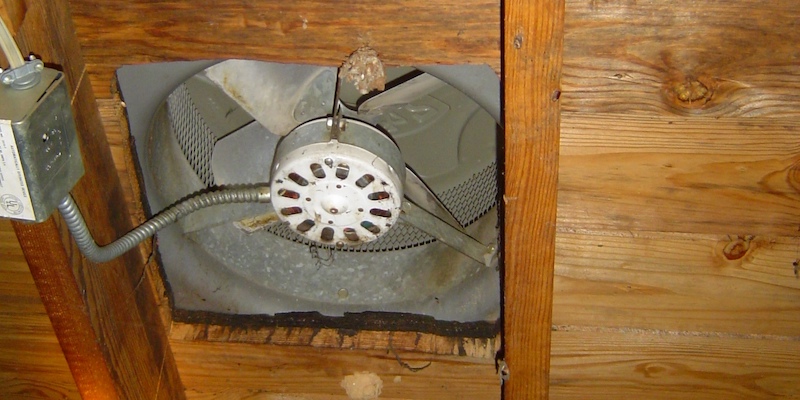
I looked at a house once that had mold growing near a bathroom exhaust fan because the powered attic ventilators were sucking humid outdoor air through the bath fan duct. Even in the best-case scenario, the energy used to run the fans often ends up being higher than any savings on cooling the living space. The best way to keep your attic cooler, invest in a reflective or light-colored roof. Or just let the attic get hot and keep the heat out of the house with good insulation and air-sealing.
Venting an attic in heating season
Even passive ventilation, although required by building codes, doesn’t always do what its proponents claim: prevent condensation in the attic, minimize the chances of getting ice dams, extend shingle life, and reduce cooling costs. The issue that led to ventilation requirements in building codes is preventing condensation. But does it work? Building science researchers at the University of Illinois believe there’s not much data to support the idea that ventilated attics don’t have moisture problems. Bill Rose, one of those researchers, wrote in his book, Water in Buildings, “It is always preferable to reduce an excess moisture source than to presume its existence and hope to dilute it with outdoor air.”
One reason venting an unconditioned attic doesn’t always help with condensation is that wind is the main driver for passive ventilation. Attics usually don’t have enough height to generate much stack effect. The main reason attic ventilation doesn’t always work, though, is that the moisture that causes problems in attics comes from the living space below. That occurs either because the house has excessive humidity in the winter, the ceiling isn’t air-sealed properly, or both. Thus, air-sealing is the best way to prevent attic condensation in winter.
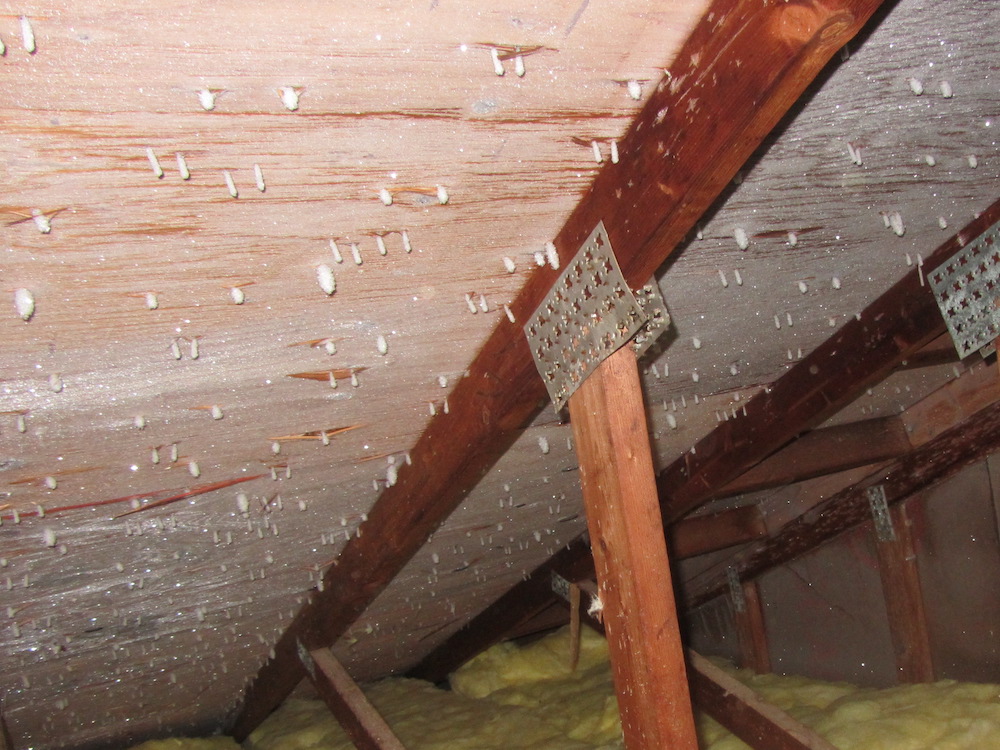
Similarly, excessive heat entering the attic is what causes ice dams. Air-sealing and insulation are much more effective at preventing ice dams than attic ventilation is. And they’re definitely better than the quick-fix solution of putting electric resistance heat on the roof.
Having said that, sometimes attic ventilation does help with moisture problems. Remember, cold air is dry air, so diluting the attic with outdoor air can dry it out. Engineer Kohta Ueno of Building Science Corporation says enough marginal cases are helped by venting that he wouldn’t recommend skipping it.
Venting an attic in cooling season
The warm-climate, summertime problems of shingle life and cooling costs also show little improvement from attic ventilation. Shingle life can be shortened by higher temperatures, and asphalt shingles do stay cooler with a ventilated attic. But the effect is small, with only about six percent reduction in temperature. Changing the color of the shingles from black to white drops the shingle temperature by about 20 °F, on the other hand. As Bill Rose wrote, “Attic ventilation does not deserve the attention it has received in relation to shingle durability.”
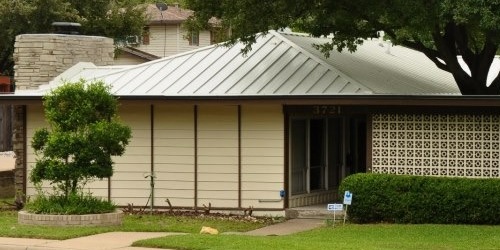
For the second problem, cooling costs, attic ventilation supposedly reduces cooling costs in the house. Yes, ventilation can keep the attic cooler, but that doesn’t translate to lower air-conditioning costs. In days of yore, when insulation wasn’t required and no one had ever heard of thermal bypasses, keeping the attic cooler certainly could keep the house cooler. With modern building codes requiring R-38 or higher for nearly the entire United States in addition to verified airtightness, there’s little heat flowing into the house even from the hottest attics. Powered attic ventilators are almost never a good idea.
The sum and substance
In a cold climate, venting an unconditioned attic is probably the safest way to build. It’s often the difference between success and failure when an attic is on the edge. But it’s a method that treats the symptoms, not the cause. An attic doesn’t end up with moisture problems because of a lack of ventilation. It has problems because of moisture and heat from the living space below. The real solution is air-sealing and insulation.
For cooling, though, passive venting may or may not help reduce costs. If it does reduce costs, that probably means you need more insulation and air-sealing, not a cooler attic. The main exception here is if you have ductwork in the attic. Then, a cooler attic can save on cooling costs even with a sufficiently airtight, insulated ceiling. If keeping the attic cooler is important to you for other reasons, changing the roof color can make the biggest difference.
The big takeaway is that for both heating and cooling, attic ventilation treats symptoms, not root causes. Airtightness, insulation, and roof color are methods for treating the causes. And they do a better job of reducing or eliminating the symptoms.
Note: This is a (slightly revised) excerpt from chapter 11 of my book, A House Needs to Breathe…Or Does It?.
________________________________________________________________________
Allison A. Bailes III, PhD is a speaker, writer, building science consultant, and the founder of Energy Vanguard in Decatur, Georgia. He has a doctorate in physics and is the author of a popular book on building science. He also writes the Energy Vanguard Blog. You can follow him on Twitter at @EnergyVanguard. Photos courtesy of author, except where noted.
Weekly Newsletter
Get building science and energy efficiency advice, plus special offers, in your inbox.





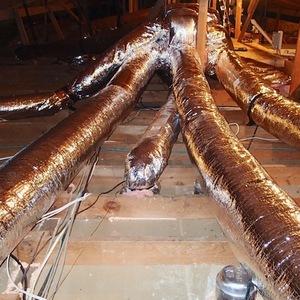
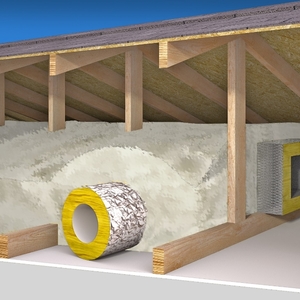
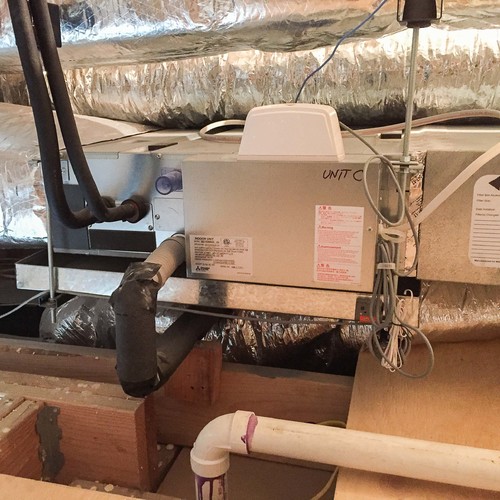
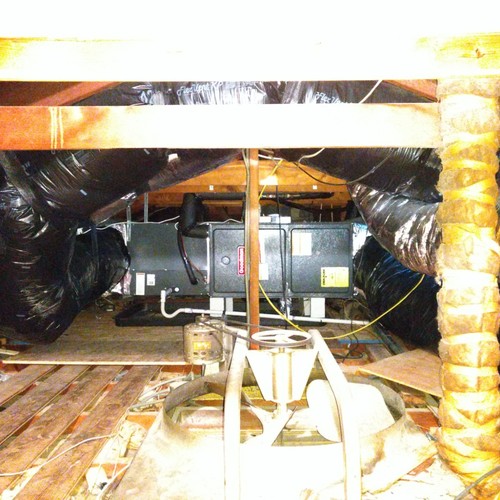






20 Comments
" it’s a method that treats the symptoms, not the cause."
That's true, but another way of looking at it is it acknowledges that even those building assemblies that are well constructed may for a variety of reasons not always enjoy the same level of perfection over time. Designers and builders get one brief point of input into a house, which then goes on to have a life of its own for many decades, and owners. Venting makes roofs that rely on very good air-sealing more resilient to change.
You could use the same criticism for rain-screen venting. The cladding should stop bulk water infiltration and good air-sealing eliminate interior moisture moving through to the sheathing. But in the real world we know it compensates for any shortcomings, and reduces risk appreciably.
Malcolm: Good points. I did mention in the article that Kohta Ueno "says enough marginal cases are helped by venting that he wouldn’t recommend skipping it."
Also, I see your point with the rainscreen analogy but it doesn't fit completely. There's no rainscreen analog for a conditioned attic.
You say 'almost never a good idea. Perhaps we can flesh out those tails in the comments section...
When is it not a terrible idea? When is it perhaps not a good idea, but an OK idea among better, but costly other options?
I ask this (not entirely rhetorically) since I have a 100 year old house with about a 16 inch attic space (average) and vents at 8 inches around the perimeter and know and tube throughout). And I have no AC. Maybe a powered ventilator not the most effective idea, but not a bad idea?.
Climate zone 3B
Luke,
Powered ventilation might be an alright alternative if you could figure out a way to supply balanced airflow to the attic so that it wasn't depressurizing the space. What that would look like I don't know.
I don't intend to be argumentative, but in my climate zone (3b) I see them frequently and when asked about them I usually say that they're at least benign if not helpful in many cases. Leakage from the habitable space below is a feature and not a bug here.
These are houses without ac and water heaters in exterior combustion closets.
Heck, my last rental had holes in the ceiling throughout the house in the ceiling.
This isn't to say I ever recommend them in New construction, cuz you might as well do it right. But in existing construction, it's not always clear that it's a bad idea... just a mediocre idea among few options.
Am I missing something?
Luke,
It depends what that powered ventilation looks like: https://www.greenbuildingadvisor.com/article/fans-in-the-attic-do-they-help-or-do-they-hurt?oly_enc_id=7565D0080934G5L
Good article. It says that the oversimplified takeaway is that all powered attic ventilation is bad.
Luke: The two biggest problems with powered attic ventilators is that they have the potential to backdraft combustion appliances and they almost always do suck conditioned air from the living space below. I've also seen one case where the attic fans backdrafted the bathroom exhaust fans, causing a mold outbreak in that bathroom.
So, if there's not potential for any of those problems AND you need to keep the attic cooler for some reason, a powered attic ventilator might be useful. The best case scenario is that the house has no backdraftable combustion appliances and no air conditioning.
Excellent...
That best case scenario is quite common in my neck of the woods/chaparral. The only combustion appliances that are typical are the range (usually not ventilated itself) and a wall furnace. Honestly, getting some additional air changes from attic ventilators might benefit that situation.
I suppose if you're going to depressurize the house and ventilate the attic, you might as well just get a whole house fan, though.
Luke: I just received this comment a few days ago
"Hi Allison, I just read you article about attic ventilators after I noticed my central A/C working better than it ever has since I turned off our gable mounted attic fan. I turned it off when our radiant heater man found our boiler exhaust fumes were not venting due to suction from the gable fan."
In another message, he wrote, "We could have died from carbon monoxide poisoning."
Allison,
"We could have died from carbon monoxide poisoning."
Yeow!
That's what he told me. I don't know that they measured the CO, but if they were backdrafting the boiler, they likely were getting CO in the house.
Thank goodness they figured it out!
So if I am understanding this article correctly, (passive) venting an attic tends to have positive results? All else equal. I am planning to build a single gable roof home, air barrier at the (flat) ceiling, unconditioned attic. Roof will be 10:12, and vented. My understanding is that this method is less expensive, less risky, easier to construct, easier to service, and generally better for the environment than creating a sealed, conditioned attic. What am I missing?
Why not treat symptoms and causes? When does passive venting create issues?
As long as you don't have mechanical equipment in your attic or plan to access it regularly for storage, you are correct--a "cold attic" is the easiest, safest, best approach. But if you have equipment or plan to be up there often, conditioning the attic is a better, if more complicated, choice.
Gotcha. No equipment up there for me, and gable end access only
kewilso3: A vented attic is generally the most cost-effective way to deal with the top of the house. But, as Mike Maines said, putting mechanical equipment or ductwork there changes the balance.
Without mechanicals there, though, let's look at your list of benefits:
less expensive - Yes
less risky - Yes, when done right
easier to construct - Yes, especially for a simple attic. Once you start adding kneewalls, changes of ceiling height, tray ceilings, and other complexities, though, it gets more difficult.
easier to service - Depends. Working in an attic with an insulated floor means the insulation gets disturbed when people have to get in there to do wiring, plumbing, etc. And I can tell you from experience, it's never easy to service a 120 °F attic.
generally better for the environment - Maybe. Insulating a roofline doesn't have to mean high GWP, high upfront carbon insulation.
“[Deleted]”
I have an old home built in 1876 in Upstate New York that has had differing remodeling throughout its life. Cellulose was blown into walls and unseated attic. The walls also had bricks in the cavities that I find every time I replace a plaster wall that is crumbling. Attic was doing ok with 3 layers of shingles until the roof was replaced with a metal roof. Next winter drips came into attic and worked down to the ceiling. There are no soffit vents only 3 passive gable vents. There is also a dirt crawl space I am working on sealing and insulating with spray foam due to laid up rock foundation.
My questions are related to all of this. Moisture is enemy #1. So start at crawl space, replacing rotted wood and sealing. .this should help with abundant moisture plus adding a crawl space dehumidifier. The roof is a problem that I have thought about using spray foam on the underside of the roof or is it possible to remove all the cellulose and spray foam the roof side of the ceiling or…
When I insulate the outside walls later with blue board, should I remove cladding, bricks and cellulose?
What about an unconditioned home in a hot and humid climate? When neither heating nor cooling are provided in houses in areas like Guam, Samoa, Hawaii, etc., one would want to keep the humid air out of the attic, but the building code still requires attic ventilation. Assuming that there is insulation at the ceiling joist level, would the 50/50 high/low rule work for airflow?
Log in or create an account to post a comment.
Sign up Log in